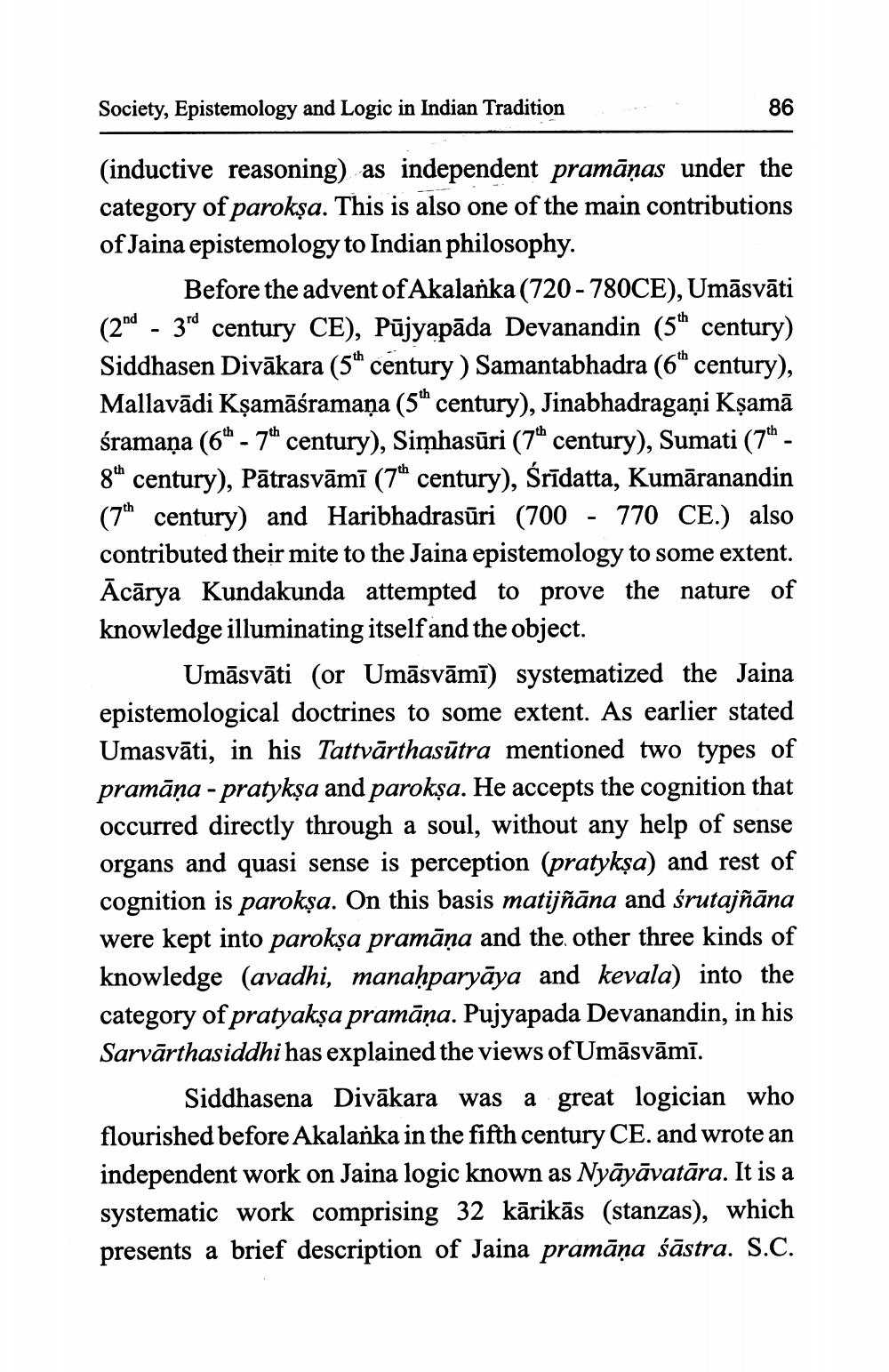________________
Society, Epistemology and Logic in Indian Tradition
86
(inductive reasoning) as independent pramāņas under the category of parokşa. This is also one of the main contributions of Jaina epistemology to Indian philosophy.
Before the advent of Akalanka (720 - 780CE), Umāsvāti (2nd - 3rd century CE), Pūjyapāda Devanandin (5th century) Siddhasen Divākara (54 century) Samantabhadra (6 century), Mallavādi Kșamāśramaņa (5€ century), Jinabhadragaại Kșamā śramaņa (6" - 7th century), Simhasūri (7“ century), Sumati (7th - 8h century), Pātrasvāmī (7h century), Śrīdatta, Kumāranandin (74h century) and Haribhadrasūri (700 - 770 CE.) also contributed their mite to the Jaina epistemology to some extent. Ācārya Kundakunda attempted to prove the nature of knowledge illuminating itself and the object.
Umāsvāti (or Umāsvāmī) systematized the Jaina epistemological doctrines to some extent. As earlier stated Umasvāti, in his Tattvārthasūtra mentioned two types of pramāņa - pratykșa and parokşa. He accepts the cognition that occurred directly through a soul, without any help of sense organs and quasi sense is perception (pratykşa) and rest of cognition is parokşa. On this basis matijñāna and śrutajñāna were kept into parokșa pramāņa and the other three kinds of knowledge (avadhi, manaḥparyāya and kevala) into the category of pratyakṣa pramāņa. Pujyapada Devanandin, in his Sarvārthasiddhi has explained the views of Umāsvāmī.
Siddhasena Divākara was a great logician who flourished before Akalanka in the fifth century CE. and wrote an independent work on Jaina logic known as Nyāyāvatāra. It is a systematic work comprising 32 kārikās (stanzas), which presents a brief description of Jaina pramāņa śāstra. S.C.




